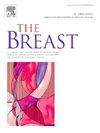描述年轻西班牙裔乳腺癌女性的生活质量轨迹:来自大型前瞻性队列的5年结果。
IF 5.7
2区 医学
Q1 OBSTETRICS & GYNECOLOGY
引用次数: 0
摘要
癌症治疗对年轻女性乳腺癌(YWBC)的生活质量(QoL)有不利影响。探索生活质量轨迹的研究主要集中在绝经后妇女身上。在这里,我们报告了YWBC中所有生活质量域和相关因素的纵向变化。方法:在这项前瞻性纵向队列研究中,年龄≤40岁的I-III期BC患者在诊断时完成了欧洲癌症研究和治疗组织的核心生活质量问卷,并在5年的4次随访中收集了人口统计学和临床数据。使用基于组的多变量轨迹模型根据患者的功能和症状评分来确定患者组,发现3组(最佳、良好和差)。与每种轨迹模式相关的因素用多项逻辑模型确定。结果:共有477名女性(中位年龄:36岁;IQR: 32-38)分为最佳(n = 259, 54%)、良好(n = 79, 17%)和不良(n = 139, 29%)组。在整个疾病过程中,生活质量差的患者在情绪功能、恶心、呕吐和疼痛方面经历了临床上显著的损害。他们也有明显的认知障碍、呼吸困难和腹泻。生活质量较好的患者在诊断后的前7个月出现有临床意义的腹泻,而生活质量较好的患者在诊断后的前2个月出现有临床意义的恶心和呕吐。值得注意的是,所有小组在随访期间都经历了严重的财务困难。诊断时经常饮酒(aOR[校正优势比]1.64;95% CI[置信区间]1.02-2.65)和her2阳性BC (aOR 2.53;95% CI 1.35-4.73)分别是与差组和良组分类相关的独立因素。结论:本研究强调了YWBC患者生活质量的可变性和持续监测的重要性。需要制定战略,改善获得经济资源的机会,管理与治疗有关的不良反应,并支持患者停止可改变的危险因素。本文章由计算机程序翻译,如有差异,请以英文原文为准。
Describing quality of life trajectories in young Hispanic women with breast cancer: 5-year results from a large prospective cohort
Introduction
Cancer treatments have a detrimental impact on the quality of life (QoL) of young women with breast cancer (YWBC). Research exploring QoL trajectories has been mostly centered on postmenopausal women. Here we report longitudinal changes across all QoL domains and associated factors in YWBC.
Methods
In this prospective longitudinal cohort study, women aged ≤40 with stage I-III BC completed the European Organization for the Research and Treatment of Cancer Core QoL questionnaire at diagnosis and during 4 follow-up visits over 5 years, alongside demographic and clinical data collection. Group-based multivariate trajectory modeling was used to identify patient groups based on their functional and symptom scores, finding 3 groups (best, good, and poor). Factors associated with each trajectory pattern were identified with multinomial logistic models.
Results
A total of 477 women (median age: 36; IQR: 32–38) were clustered into the best (n = 259, 54 %), good (n = 79, 17 %), or poor trajectory groups (n = 139, 29 %). Throughout the disease, patients with a poor QoL experienced clinically significant impairment in emotional functioning, nausea and vomiting, and pain. They also had significant cognitive impairment, dyspnea, and diarrhea. Patients with a good QoL had clinically meaningful diarrhea for the first 7 months, while those with the best QoL had clinically important nausea and vomiting during the first 2 months since diagnosis. Noteworthy, all groups experienced significant financial difficulties throughout their follow-up. Regular alcohol consumption at diagnosis (aOR [adjusted odds ratio] 1.64; 95 % CI [confidence interval] 1.02–2.65) and HER2-positive BC (aOR 2.53; 95 % CI 1.35–4.73) were independent factors associated with classification to the poor and good groups, respectively.
Conclusion
This study underscores the variability in QoL among YWBC and the importance of ongoing monitoring. Strategies to improve access to economic resources, manage treatment-related adverse effects, and support patients in discontinuing modifiable risk factors are needed.
求助全文
通过发布文献求助,成功后即可免费获取论文全文。
去求助
来源期刊

Breast
医学-妇产科学
CiteScore
8.70
自引率
2.60%
发文量
165
审稿时长
59 days
期刊介绍:
The Breast is an international, multidisciplinary journal for researchers and clinicians, which focuses on translational and clinical research for the advancement of breast cancer prevention, diagnosis and treatment of all stages.
 求助内容:
求助内容: 应助结果提醒方式:
应助结果提醒方式:


